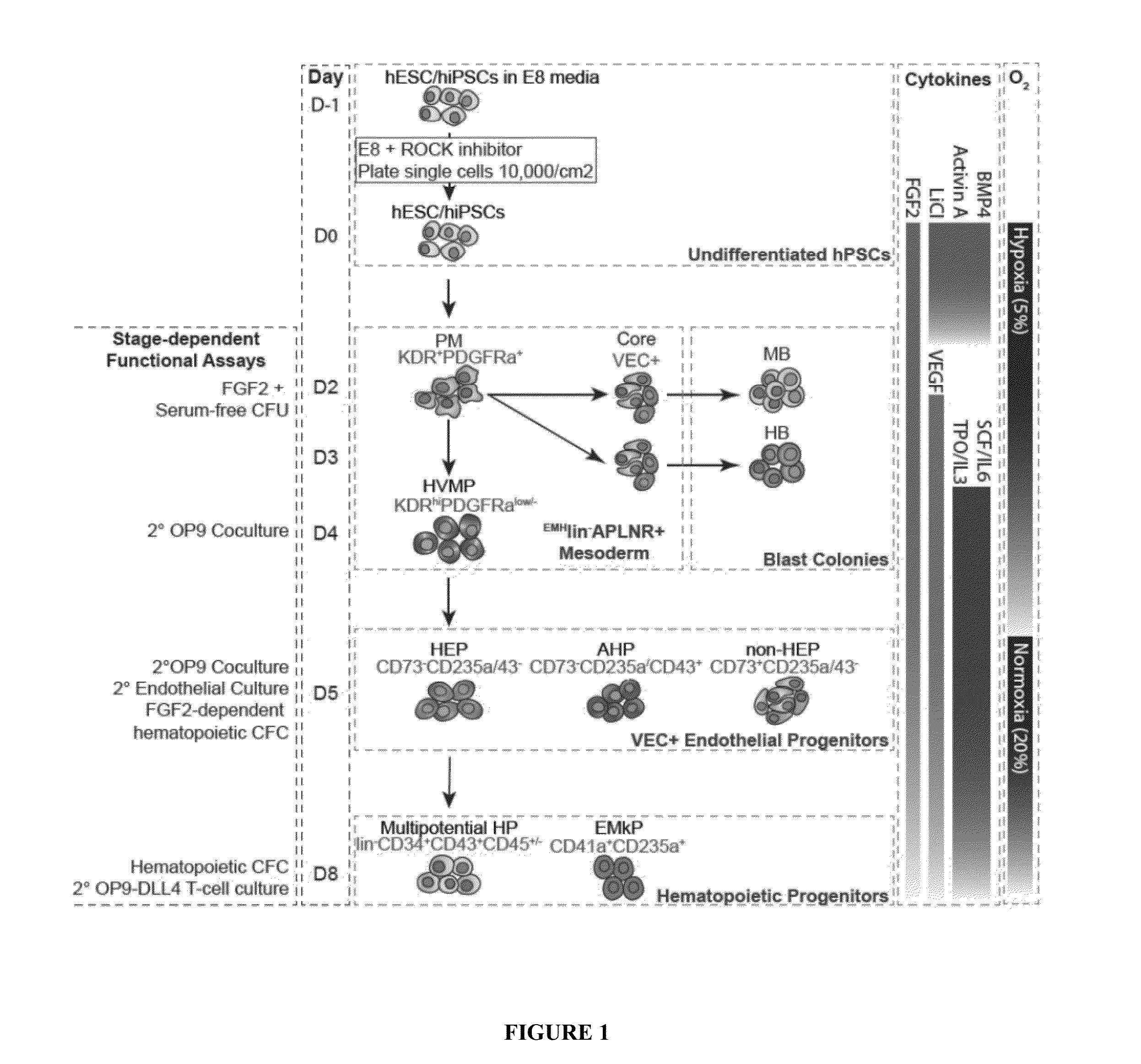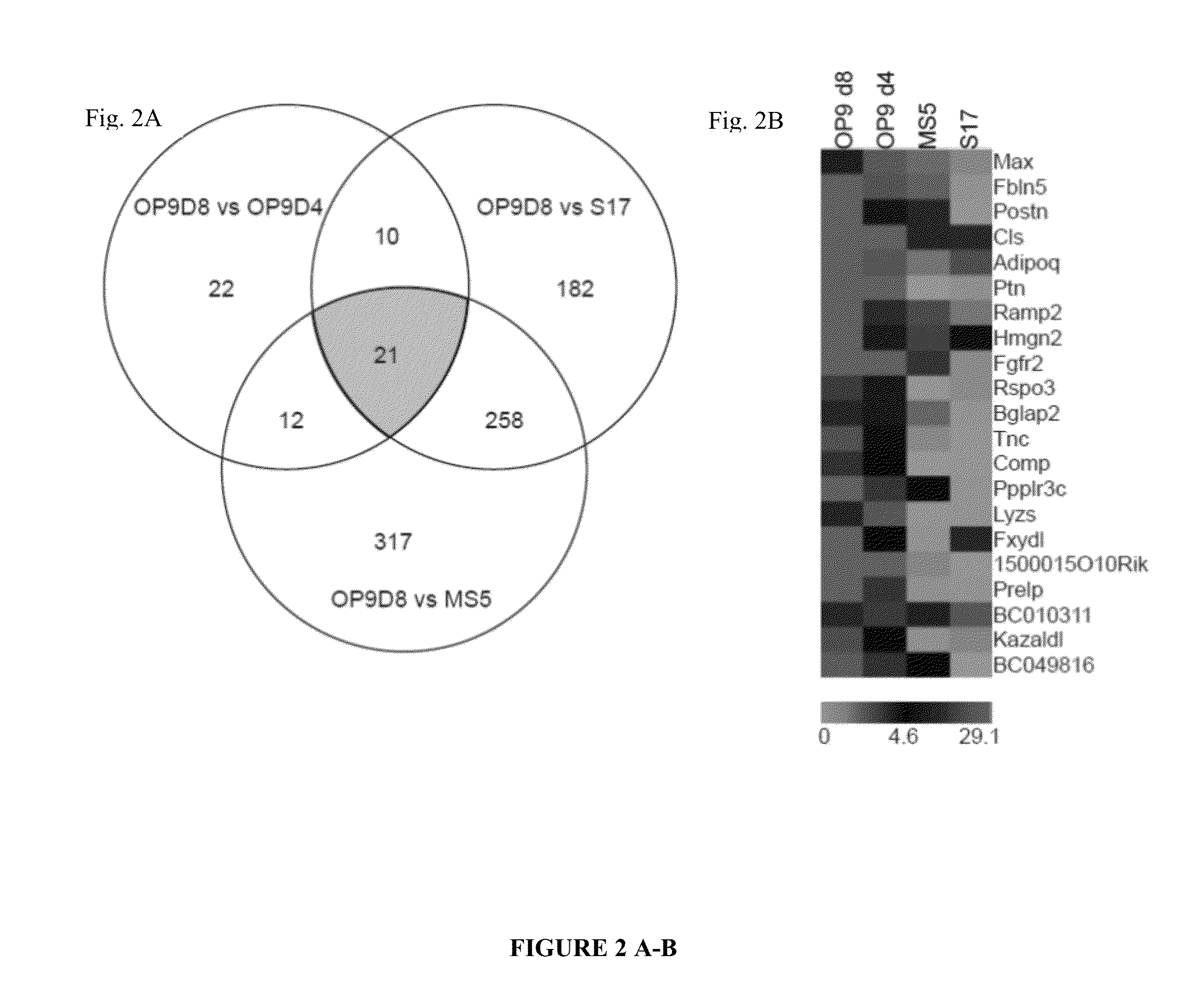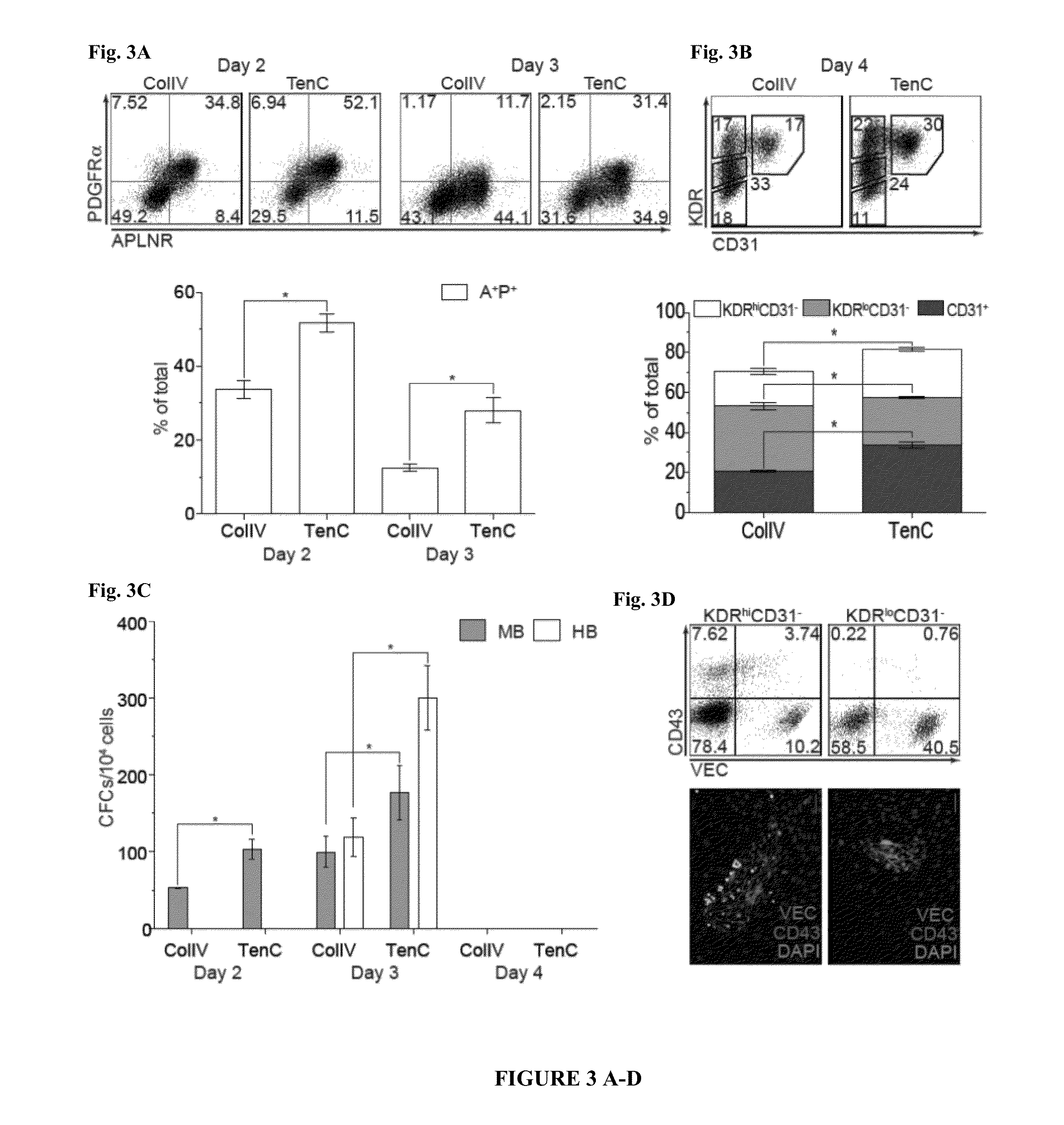Methods and Materials for Hematoendothelial Differentiation of Human Pluripotent Stem Cells Under Defined Conditions
a technology of hematoendothelial differentiation and defined conditions, which is applied in the direction of artificial cell constructs, tumor/cancer cells, skeletal/connective tissue cells, etc., can solve the problems of further limitations of co-culture systems that rely on mouse feeder cells and serum (i.e., xenogenic sources) and limited utility of studying the hpsc response to specific growth factors
- Summary
- Abstract
- Description
- Claims
- Application Information
AI Technical Summary
Benefits of technology
Problems solved by technology
Method used
Image
Examples
example 1
IMDM / F12 Based Media Significantly Improves Differentiation Efficiency of hPSCs into Hematoendothelial Lineage
[0089]Previously, our lab developed protocol for the efficient differentiation of hematopoietic hPSC differentiation using a coculture method on the mouse stromal cell line, OP9.9,13 Although OP9 system supports efficient generation of HE and multilineage hematopoietic progenitors (FIG. 1), this system is very sensitive to variations in serum quality, stromal cell maintenance, and size of hPSC colonies and clumps used for differentiation.13,14 Forming embryoid bodies (EBs) is another commonly used approach for inducing HE and blood formation from hPSCs.7,15,16 However, EB methods often rely on serum or non-defined medium and also have significant drawbacks, such as asynchronous differentiation, high variability and dependence on initial clump size. Additionally, inconsistency in quality of hPSCs due to variations in albumin batches used for hPSC maintenance may introduce var...
example 2
Analysis of a Unique Molecular Signature of Hematopoiesis-Supportive Stromal Cells Identified Tenascin C as an Extracellular Matrix that Promotes the Development and Maintenance of Hematopoietic Precursors
[0112]Previously, we showed that OP9 is superior to other stromal cell lines such as S17, and MS5 in induction of hematopoietic differentiation 9. It was also found that day 8 overgrown OP9 cultures are superior to day 4 freshly confluent OP9 in induction of hematopoietic-CFCs, including multipotential GEMM-CFCs9. Since the confluency of the stromal cells affect differentiation efficiency, this led us to believe that there is an extracellular matrix influencing hematoendothelial differentiation. In order to find the matrix protein(s) critical for hematopoiesis-supportive activity of OP9 we performed molecular profiling of S17 and MS5 stromal cell lines with low hematopoiesis-inducing potential and OP9 cells. In addition, we compared overgrown OP9 (day 8) with freshly confluent OP9 ...
example 3
Time- and Dose-Dependent Treatment of FGF2, BMP4, Activin A, LiCl, and VEGF Induces Mesodermal, Endothelial, and Hematopoietic Stages of Development
[0113]Our prior studies identified distinct stages of hematoendothelial development following hPSC differentiation in coculture with OP9 (FIG. 1)6,9-11,26. Plating hPSCs onto OP9 stromal cells induces formation of primitive streak and mesodermal cells which can be detected based on expression apelin receptor (APLNR) and KDR (VEGFR2)11 and lack of expression Endothelial (CD31, CD144(VE-cadherin)), endothelial / Mesenchymal (CD73, CD105) and Hematopoietic (CD43, CD45) markers, i.e. by EMHlin− phenotype. The first KDR+ mesodermal cells appearing in OP9 coculture on day 2 of differentiation express APLNR and PDGFRalpha (EMHlin−KDR+APLNR+PDGFRalpha+ hereafter referred as A+P+ cells). These cells display mesenchymoangioblast (MB) potential, i.e. capacity to form colonies with both mesenchymal stem cell (MSC) and vascular potential. On day 3 of d...
PUM
 Login to View More
Login to View More Abstract
Description
Claims
Application Information
 Login to View More
Login to View More - R&D
- Intellectual Property
- Life Sciences
- Materials
- Tech Scout
- Unparalleled Data Quality
- Higher Quality Content
- 60% Fewer Hallucinations
Browse by: Latest US Patents, China's latest patents, Technical Efficacy Thesaurus, Application Domain, Technology Topic, Popular Technical Reports.
© 2025 PatSnap. All rights reserved.Legal|Privacy policy|Modern Slavery Act Transparency Statement|Sitemap|About US| Contact US: help@patsnap.com



